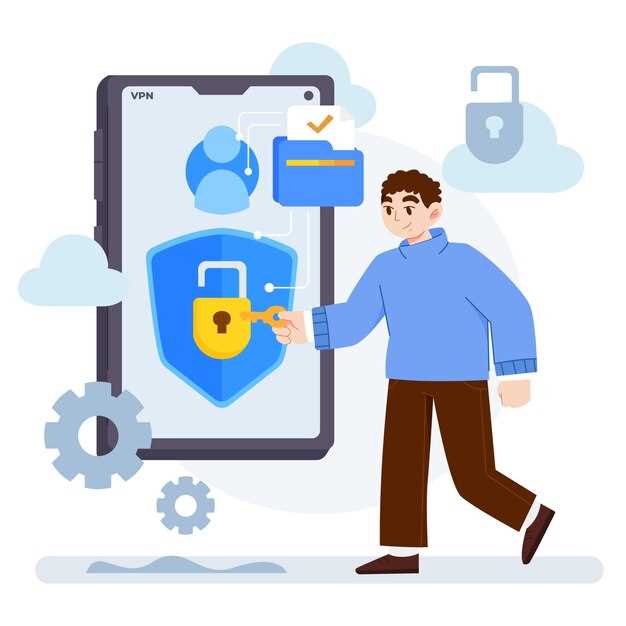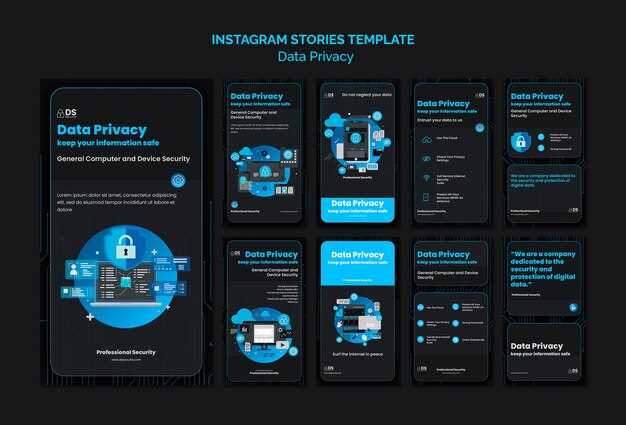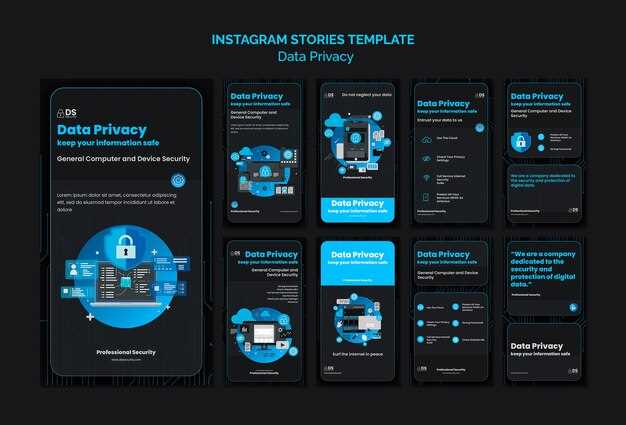In today’s interconnected world, safeguarding digital solutions is more crucial than ever. With the growing reliance on applications, the potential vulnerabilities associated with them can have serious implications. Every developer faces the challenge of ensuring that their creations are resilient against threats. A single oversight can compromise user trust and expose sensitive information.
As technology evolves, so do the tactics employed by malicious actors. They continuously seek new ways to exploit weaknesses in various platforms. Therefore, it’s vital to stay informed and proactive. Simple measures can make a significant difference in creating a safer environment.
When venturing into the realm of software creation, one must be aware of both the risks and the preventive measures available. By implementing robust methodologies, developers can ultimately build applications that stand the test of time and threats. A well-planned approach can lead to achieving not just compliance, but also user confidence and satisfaction.
In this article, we’ll explore actionable recommendations that help mitigate risks, ensuring that your projects maintain integrity and reliability under pressure. From understanding common pitfalls to employing innovative solutions, every step taken towards fortifying your application will contribute to a safer digital experience.
Essential Security Best Practices for Mobile App Development

Creating software that is resilient to threats is paramount in today’s digital landscape. Trust is vital. Users need to feel safe. A strong foundation fosters confidence in your solution.
Consider implementing robust measures. These enhance the overall reliability of your creation. By addressing vulnerabilities, developers can create a more secure environment.
- Utilize strong encryption methods for data storage and transmission.
- Regularly update your codebase to fix vulnerabilities and add features.
- Conduct thorough testing to identify weaknesses and patch them promptly.
- Implement authentication protocols to verify user identities reliably.
- Restrict permissions to only what is necessary for functionality.
Enhancing the integrity of your project not only protects sensitive information but also reassures users about the safety of their interactions within the application, leading to higher levels of engagement and satisfaction.
- Educate your team about the latest threats and countermeasures.
- Incorporate secure coding guidelines into your development cycle.
- Adopt an incident response plan for swift action during breaches.
- Monitor application performance and user feedback to identify anomalies.
- Leverage third-party security audits to gain an objective perspective.
Incorporating these methodologies creates a culture of vigilance. It not only strengthens your solution but also empowers users. They become more aware of their role in maintaining the security of their information. Ultimately, prioritizing these approaches leads to a resilient and trustworthy experience.
Protecting Users and Their Data

Ensuring the safety of an application’s users is of paramount importance. A mobile platform must prioritize the safeguarding of sensitive information. In an era of frequent data breaches and cyber threats, the responsibility weighs heavily on developers. Trust is fragile; a single incident can shatter it. Users expect their data to be handled responsibly.
Implementing strong encryption techniques is vital. Data should be encrypted both during transmission and storage. This helps to prevent unauthorized access. Always use up-to-date libraries and frameworks that adhere to the latest standards. Relying on outdated tools can expose vulnerabilities.
Regular updates are necessary. Frequent application patches ensure that security loopholes are addressed promptly. Users must also be encouraged to download updates. This communication builds trust and demonstrates commitment to their safety. However, even the most sophisticated measures are useless if user behavior is not considered.
Educating users about safe practices enhances protection. For instance, encourage them to create complex passwords. Promote the importance of not using the same password across multiple services. Users should be informed about recognizing phishing attempts and suspicious links. Awareness is a powerful tool in the digital realm.
| Action | Description |
|---|---|
| Use Encryption | Protect data during transfer and storage. |
| Regular Updates | Patch vulnerabilities in the application consistently. |
| User Education | Inform users about safe digital behaviors. |
Understanding Common Security Threats
In today’s digital landscape, recognizing potential risks is crucial. Various vulnerabilities can threaten the integrity of software solutions. Users often overlook these dangers, putting sensitive information at risk. Identifying these threats early can save time and resources later on.
- Data breaches are a pressing concern.
- Malware can infiltrate systems silently.
- Unauthorized access poses a significant challenge.
- Phishing attacks target unsuspecting individuals.
- Weak encryption may lead to data exposure.
Understanding the method and implications of these attacks is just as important as recognizing their existence; each risk carries unique consequences that can impact users and their private information in various ways, potentially undermining trust in your solutions.
-
Data breaches: Unauthorized access to sensitive data can have devastating effects.
-
Malware: Malicious software can disrupt operations and steal valuable information.
-
Unauthorized access: This occurs when attackers exploit vulnerabilities to gain control.
-
Phishing: Deceptive communication tricks users into revealing private credentials.
-
Weak encryption: Insufficient protection can expose data even when it is stored securely.
By analyzing these prevalent threats, developers can take proactive measures to mitigate damage and create a safer environment for their users, ensuring that the software not only meets functional requirements but also stands resilient against emerging challenges.
Implementing User Authentication Protocols
Ensuring that users are who they claim to be is paramount in building trust. Proper validation of user identities helps mitigate various threats. Authentication methods vary widely. They can be simple or complex, depending on the application’s needs. However, maintaining a robust user authentication process is crucial for safeguarding sensitive information.
Consider multi-factor authentication. This approach combines something the user knows, like a password, with something they have, such as a smartphone. By requiring multiple verification steps, you significantly enhance safety levels. It’s like adding extra locks to a door. Users might initially find it cumbersome, but the peace of mind is worth the effort.
| Authentication Method | Description | Pros | Cons |
|---|---|---|---|
| Password-Based | Users enter a password to access their account. | Simplicity, ease of implementation. | Susceptible to phishing and weak passwords. |
| Two-Factor Authentication | Requires both password and a second factor for access. | Increased security through additional verification. | May inconvenience users who forget their second factor. |
| Biometric Authentication | Uses unique physical traits (fingerprint, face ID). | Highly secure and convenient for users. | Hardware limitations and privacy concerns. |
Regularly updating authentication protocols is another effective strategy. As vulnerabilities emerge, outdated methods can become easily exploitable. Take time to review and enhance authentication requirements periodically. Additionally, educating users about strong password creation and management practices plays a key role. Empowering users with this knowledge creates a safer online environment.
Lastly, always encrypt sensitive data during transmission and storage. This additional layer of protection is invaluable in defending against unauthorized access. By committing to these methods, you foster an atmosphere of confidence. Users will feel secure and valued, leading to a loyal user base. The goal is not just protection; it’s about building relationships based on trust.
Regularly Updating Application Security
Keeping your application up to date is crucial in the digital landscape. Software evolves, and so do potential vulnerabilities. Regular updates help in mitigating risks and enhancing the overall robustness of your product. Users expect a secure experience, and developers must rise to the occasion.
Updates play an essential role in maintaining trust. Outdated software can expose applications to various threats. Without timely patches, users’ data may be at risk. Implementing a consistent update schedule can prevent many common issues. Being proactive is key.
- Monitor for vulnerabilities consistently.
- Apply patches as soon as they are available.
- Review third-party libraries and frameworks.
- Educate your team on new threats.
- Test updates thoroughly before release.
By ensuring that you regularly scrutinize both your own code and any external components used, you can significantly reduce the likelihood of successful attacks, effectively enhancing your application’s resilience against emerging threats that can exploit weaknesses if left unattended for too long.
In conclusion, an ongoing commitment to keeping your software current promotes not only integrity but also user confidence. Always prioritize updates as an integral part of your application lifecycle.
Techniques for Secure Data Storage
Ensuring that sensitive information is kept safe is crucial. Various methods can help achieve this goal. Effective data protection not only safeguards user privacy but also reduces the risk of breaches. Organizations must stay vigilant. They should adopt innovative solutions to create a robust storage environment.
Encryption is a fundamental technique used to protect data at rest and in transit. This process transforms information into a code, requiring a key for access. Without this key, unauthorized individuals cannot retrieve the original content. It acts as a powerful barrier against potential threats.
Another method involves the use of secure storage locations. Cloud services often provide advanced options for data security. By selecting providers with excellent reputations, developers can reduce vulnerabilities. Moreover, local storage techniques should implement safeguards to avoid unauthorized access.
Regular backups are a vital component of any data strategy. They serve as a safeguard against data loss due to various threats, including hardware failure or cyber-attacks. By storing copies of important information in separate places, businesses can ensure continuity even in dire circumstances. Not doing so could lead to irreversible damage in critical situations.
Implementing access controls is another effective approach. Limiting who can see and use data minimizes the opportunities for misuse. Role-based access ensures individuals only interact with the data necessary for their tasks, thereby reducing potential exposure. This method requires diligent management but offers substantial rewards.
Educating users on safe data handling plays an integral role as well. Awareness of risks leads to better practices, which ultimately supports overall data protection. Establishing clear guidelines makes it easier for everyone involved to follow secure protocols. This collective effort can significantly decrease the likelihood of accidental breaches.
Vulnerability Assessment Techniques
Identifying weaknesses within software is crucial in today’s tech landscape. A range of methods can reveal potential flaws. By examining applications thoroughly, developers can reduce risks significantly. Each technique plays a vital role in ensuring robust performance.
Common approaches include code review, penetration testing, and automated scanning tools. Code review allows for a meticulous examination of source files, highlighting areas vulnerable to attack. On the other hand, penetration testing simulates real-world attacks to evaluate how an app withstands threats. Automated tools, meanwhile, expedite the detection of known vulnerabilities through predetermined criteria.
Combining these techniques offers an extensive overview of an application’s security posture. A holistic assessment not only identifies existing vulnerabilities but also provides insights into improving defensive measures. Regular evaluations can ensure that applications remain resilient against evolving threats.
Understanding the distinct advantages of each technique encourages informed decision-making. While code reviews foster collaborative scrutiny, penetration testing introduces a practical element. Automated tools streamline the process but may miss complex issues. Thus, integrating diverse methods enhances the overall effectiveness of vulnerability assessments.
Moreover, continuous evaluation is recommended for safeguarding applications over time. Threat landscapes change rapidly, so staying vigilant is necessary for long-term stability. By embracing various assessment techniques, developers can better anticipate potential breaches and mitigate risks proactively.
Conducting Regular Security Audits
Performing frequent assessments is crucial in today’s technology landscape. It serves as a proactive measure to identify potential weaknesses. Regular evaluations help ensure that potential vulnerabilities are addressed promptly. They also provide insights into how effectively your protocols are working. A thorough examination can reveal hidden issues that might be overlooked during day-to-day operations.
The process should not be a one-time event. Frequent audits allow developers to stay ahead of threats. This practice promotes a culture of continuous improvement. It also fosters an environment where security is prioritized at all stages of production. By incorporating systematic reviews, teams can adapt to new challenges swiftly and effectively.
Additionally, involving various experts during these assessments enhances the outcomes. External auditors bring fresh perspectives that might expose gaps in knowledge. Collaborating with these specialists can lead to innovative solutions. They can help formulate robust strategies tailored specifically for unique situations.
To truly benefit from this initiative, organizations need to document findings diligently. Keeping track of vulnerabilities discovered and actions taken is essential. This record can serve as a roadmap for future improvements. It is also invaluable for compliance with regulations that govern data management.
Lastly, consider integrating audit results into your overall strategy. Use insights gained to influence development processes and training programs. Establishing a responsive framework reinforces the importance of ongoing vigilance. In doing so, you not only enhance the overall robustness but also instill confidence among stakeholders.
Automated Tools for Identifying Vulnerabilities
In today’s rapidly advancing technological landscape, the need for robust solutions to detect weaknesses is paramount. Automated tools offer an efficient means to uncover potential flaws in software. They simplify complex processes. These tools can save time and resources, allowing developers to focus on innovation. Examination and analysis become more streamlined with automation.
Using these tools provides a comprehensive overview of vulnerabilities that may exist within codebases. They assess various aspects of applications, highlighting areas where risks are prevalent. Additionally, they run numerous tests simultaneously, ensuring thorough coverage in a short time frame. As a result, developers receive actionable insights that can be employed to strengthen their systems.
There are numerous types of automated instruments available, including static and dynamic analysis tools. Static analysis tools examine code without executing it, identifying potential issues before deployment. On the other hand, dynamic analysis tools test running applications, revealing real-time vulnerabilities. Each of these types serves a unique purpose, and selecting the right mix can enhance overall quality control.
Implementing automated solutions brings significant advantages. They not only increase accuracy in detecting flaws but also facilitate compliance with industry standards. Automated scans can be integrated into the development pipeline. This ensures that vulnerabilities are addressed early, mitigating risks before they escalate into severe problems for end-users. Companies that prioritize these measures are more likely to maintain trust and credibility.
In conclusion, leveraging automated tools for vulnerability identification is an invaluable strategy. They are essential for creating resilient software that can withstand potential threats. By adopting such methodologies, organizations can effectively safeguard their applications while fostering a proactive approach to development.
Best Practices for Code Reviews
Code evaluations play a crucial role in enhancing the quality of software. These reviews not only catch issues early but also encourage collaboration among developers. Engaging in this process brings a fresh perspective to the codebase. Combined insights can lead to improved functionality and maintainability. Every piece of code can carry hidden complexities that might slip past an individual’s scrutiny.
Establish a clear understanding of objectives during the assessment. It’s vital to define what aspects the reviewers should focus on. Setting goals ensures that all contributors are aligned with expectations. This clarity fosters more meaningful discussions and minimizes confusion. Encourage open dialogues where questions are welcomed and exploration is promoted.
Maintain a respectful and constructive atmosphere throughout the critique process. Each developer should feel valued for their contributions. Negative feedback can dishearten and hinder progress. Instead, frame suggestions positively to stimulate collaborative improvement. Acknowledging the strengths in the work can also motivate further development.
Utilize tools that facilitate seamless reviews and keep everything organized. There are many platforms available that can streamline communication and manage changes efficiently. Such tools enable easy tracking of comments and revisions. They also help in maintaining a historical record of changes made, which can be invaluable. With technology at our disposal, why not leverage it wisely?
Time management is essential during code evaluations. Allocate specific periods dedicated solely to deep dives into the code. Break down larger sections into manageable parts to avoid overwhelming participants. Creating a structured timeline helps ensure thorough inspections without causing burnout. Balance is key; reviewers should feel capable, not rushed.
Enable knowledge sharing by encouraging reviewers to articulate their thoughts clearly. This promotes learning and understanding within the team. Encourage team members to explain their reasoning behind suggestions, which may highlight underlying principles that others can grasp. This collective learning environment will empower all involved and strengthen the overall coding practices.
Video:
Startup Security: 5 Essential Measures to Protect Your Data (and Your Dreams!)
Startup Security: 5 Essential Measures to Protect Your Data (and Your Dreams!) by Dee Odus 1 view 8 months ago 1 minute, 27 seconds
Q&A:
What are the main security threats to mobile applications?
Mobile applications face various security threats, including data breaches, malware attacks, and unauthorized access. Hackers can exploit vulnerabilities in the app’s code to gain access to sensitive user data, such as personal information or financial details. Additionally, insecure application programming interfaces (APIs) can be targeted to bypass security controls. It’s essential for developers to be proactive in identifying and addressing these threats during the development process.
How can developers ensure that user data is securely transmitted over the network?
To ensure secure transmission of user data, developers should implement Transport Layer Security (TLS) protocols, which encrypt data sent over the network. It’s important to use HTTPS instead of HTTP to prevent man-in-the-middle attacks. Additionally, developers should regularly update their SSL certificates and implement secure sockets to maintain a high level of security for data in transit. Furthermore, validating the server’s security certificate can add an extra layer of protection against potential threats.
What role does regular testing play in mobile app security?
Regular testing is crucial for maintaining the security of mobile applications. This includes conducting vulnerability assessments, penetration testing, and code reviews. By testing the application at various stages of development, developers can identify potential security flaws before the app is released to the public. Post-launch, ongoing security testing is also essential to address new vulnerabilities that may arise over time. A combination of automated and manual testing approaches will yield the most comprehensive results in securing the app.
Why is user authentication important in mobile app security?
User authentication is a cornerstone of mobile app security because it verifies the identity of users accessing the app. Strong authentication mechanisms, such as multi-factor authentication (MFA) or biometric authentication, help prevent unauthorized access to sensitive features or data within the app. By implementing robust authentication protocols, developers can significantly reduce the risk of account takeover and data breaches, ensuring that only legitimate users can interact with the app securely.
What best practices should be followed for securely storing user data in mobile applications?
To securely store user data in mobile applications, developers should always use encryption techniques to protect sensitive information both in transit and at rest. This includes employing strong encryption algorithms to secure data stored on the device, as well as leveraging secure storage options such as the Keychain on iOS or the Keystore system on Android. Developers should also minimize data retention by storing only necessary information and implementing data access controls. Regularly auditing stored data and following the principle of least privilege can further enhance data security.




